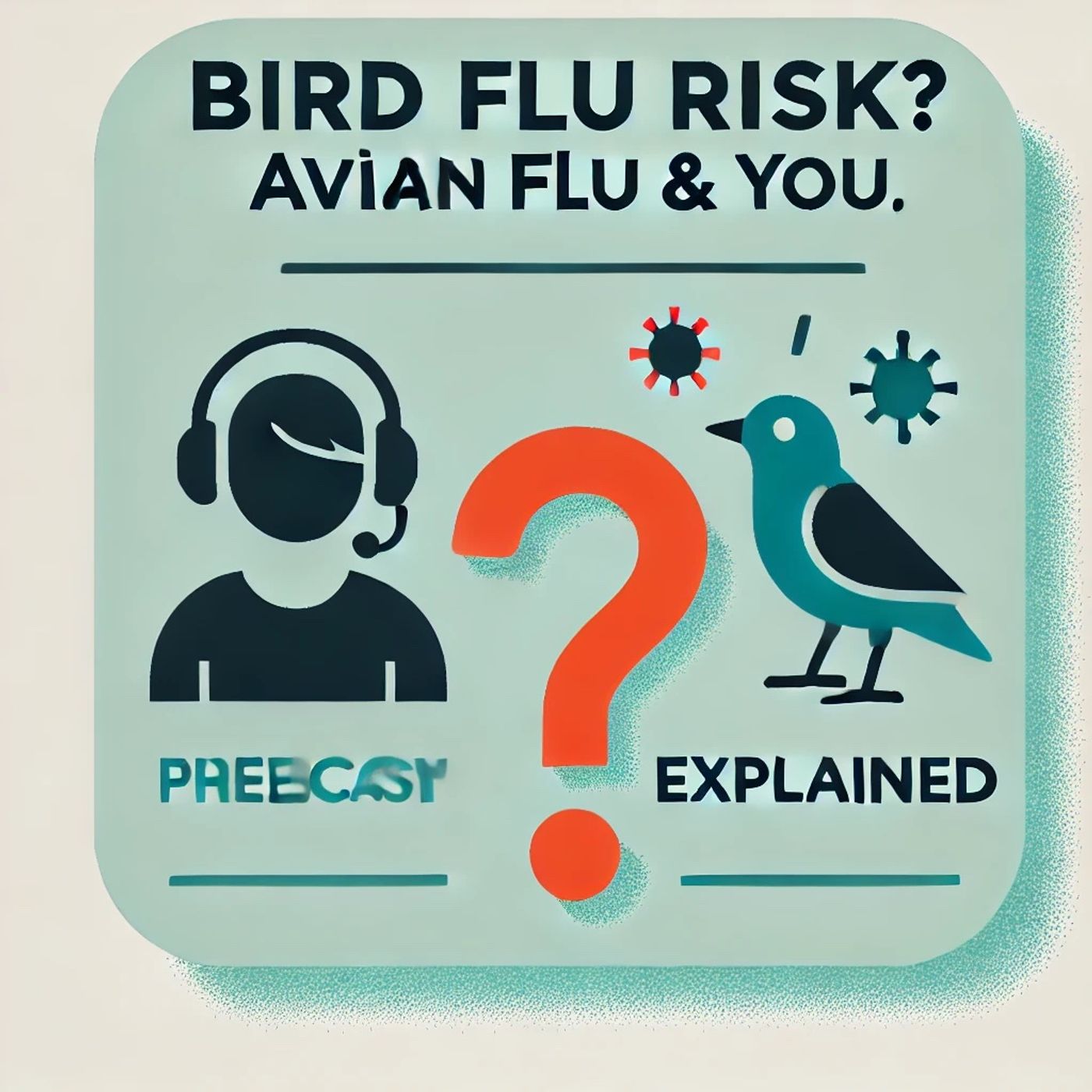Podcast Episode Details
Back to Podcast Episodes
Bird Flu Risk Explained: Your Essential Guide to Staying Safe and Understanding Personal Exposure Levels
Welcome to Bird Flu Risk? Avian Flu and You, Explained, your three-minute personalized risk assessment podcast. I’m here to help you understand your individual risk for bird flu—what matters for you, what doesn’t, and how to make smart decisions.
Let’s start with the basics. Right now, according to the CDC and leading global health agencies, the overall public risk from bird flu, specifically the H5N1 virus, remains low. But risk is not equally shared. Your occupation, location, age, and health status all play a part.
First, if you work with poultry, dairy cattle, or are frequently exposed to birds—think farm workers, slaughterhouse staff, veterinarians, or even anyone who handles raw milk—your risk is higher than average. Johns Hopkins research and recent CDC data note that farm workers and those in jobs with direct animal exposure are most at risk. This means if you spend your days on a poultry farm or in a dairy processing plant, you should be extra vigilant and consistently follow recommended protective measures like personal protective equipment and hand hygiene.
Location matters too. If you live or work in areas with active outbreaks in poultry or dairy herds, your risk goes up. Rural agricultural regions and places with backyard flocks see more risk, especially where infection control is less rigorous or when there are known outbreaks nearby.
Next, age and health. The CDC reports older adults have higher odds of severe illness, while kids generally have lower risk. If you have chronic health conditions that weaken your immune system, you also face higher odds of complications. For most healthy adults who aren’t exposed to sick birds or contaminated environments, risk remains minimal.
Now, let’s walk through a quick scenario-based risk calculator.
If you’re a healthy adult living in the city, no poultry nearby, and no animal contact, your risk is very low. Pause any worry; bird flu is not circulating in a way that impacts the general public.
If you’re a poultry farm worker in a county with recent outbreaks, your risk is moderate to high. You should wear respiratory protection, avoid touching your face, wash hands after all animal contact, and get vaccinated for seasonal flu, if possible.
Retired? Living in suburbia? No animal exposure? State and national health agencies are confident your risk is minimal. Routine handwashing and staying informed are all you need.
For high-risk listeners—farm workers, veterinarians, people with weakened immune systems, or the elderly—stay alert. Report any flu-like symptoms after animal contact to your healthcare provider right away. Use PPE at work, avoid consuming raw or unpasteurized dairy, and keep up with local health advisories.
For everyone else, don’t panic. Bird flu is not spreading person-to-person, and strict controls are in place across the poultry and dairy industry. As The Center for Health Security underscores, current U.S. outbreaks are declining and human cases remain exceedingly rare. But, if you develop a sudden fever, cough, or shortness of breath after contact with birds, see your doctor.
So, when should you worry? Really, only if you’re in a high-risk job or location, or if local health authorities notify you of an outbreak near your home.
That’s all for today’s personalized risk check. Thanks for tuning in to Bird Flu Risk? Avian Flu and You, Explained. Join us next week for more clear answers. This has been a Quiet Please production, and to learn more, visit Quiet Please Dot A I. Stay informed, stay safe, and see you next time.
For more http://www.quietplease.ai
Get the best deals https://amzn.to/3ODvOta
Published on 1 week ago